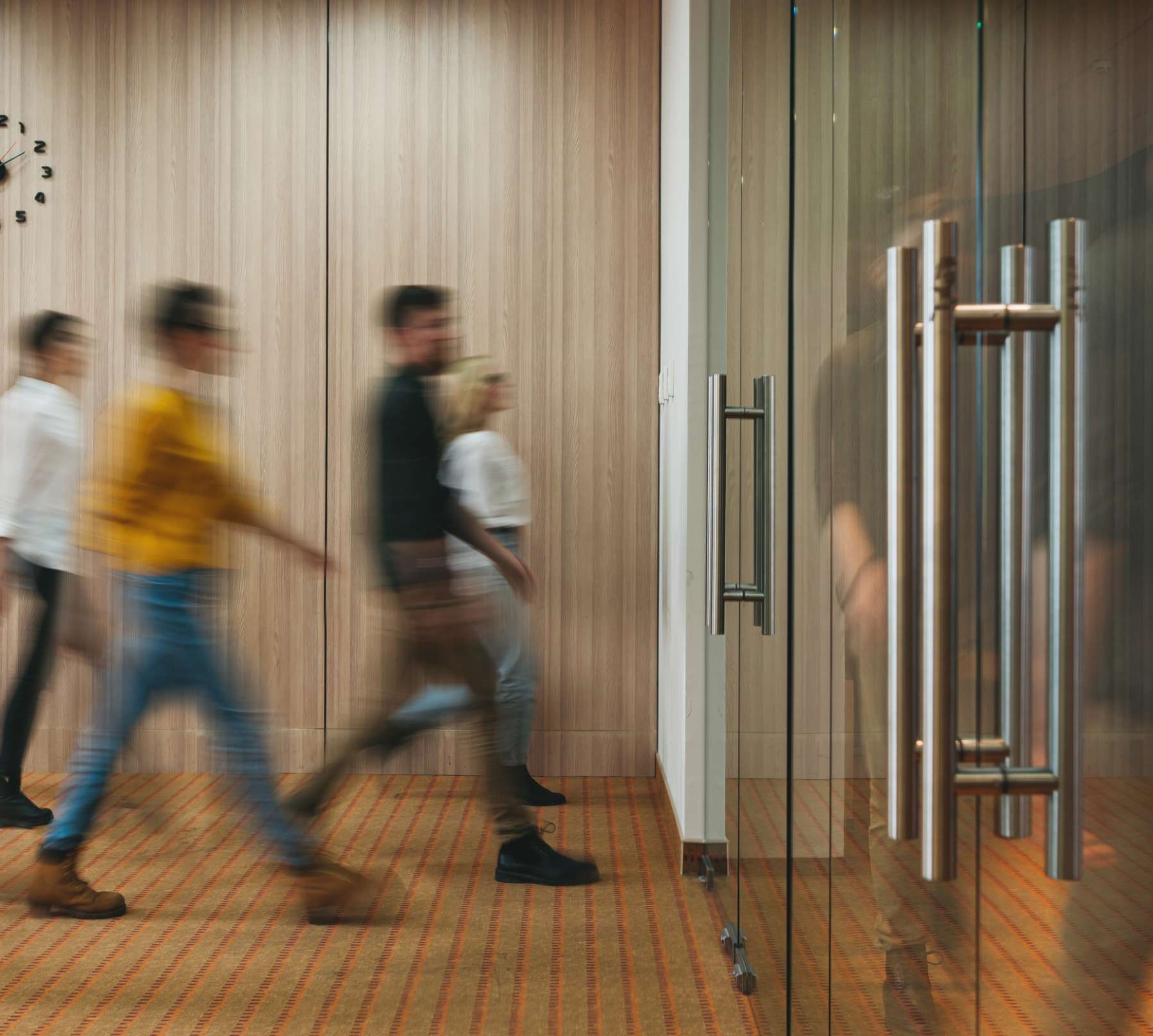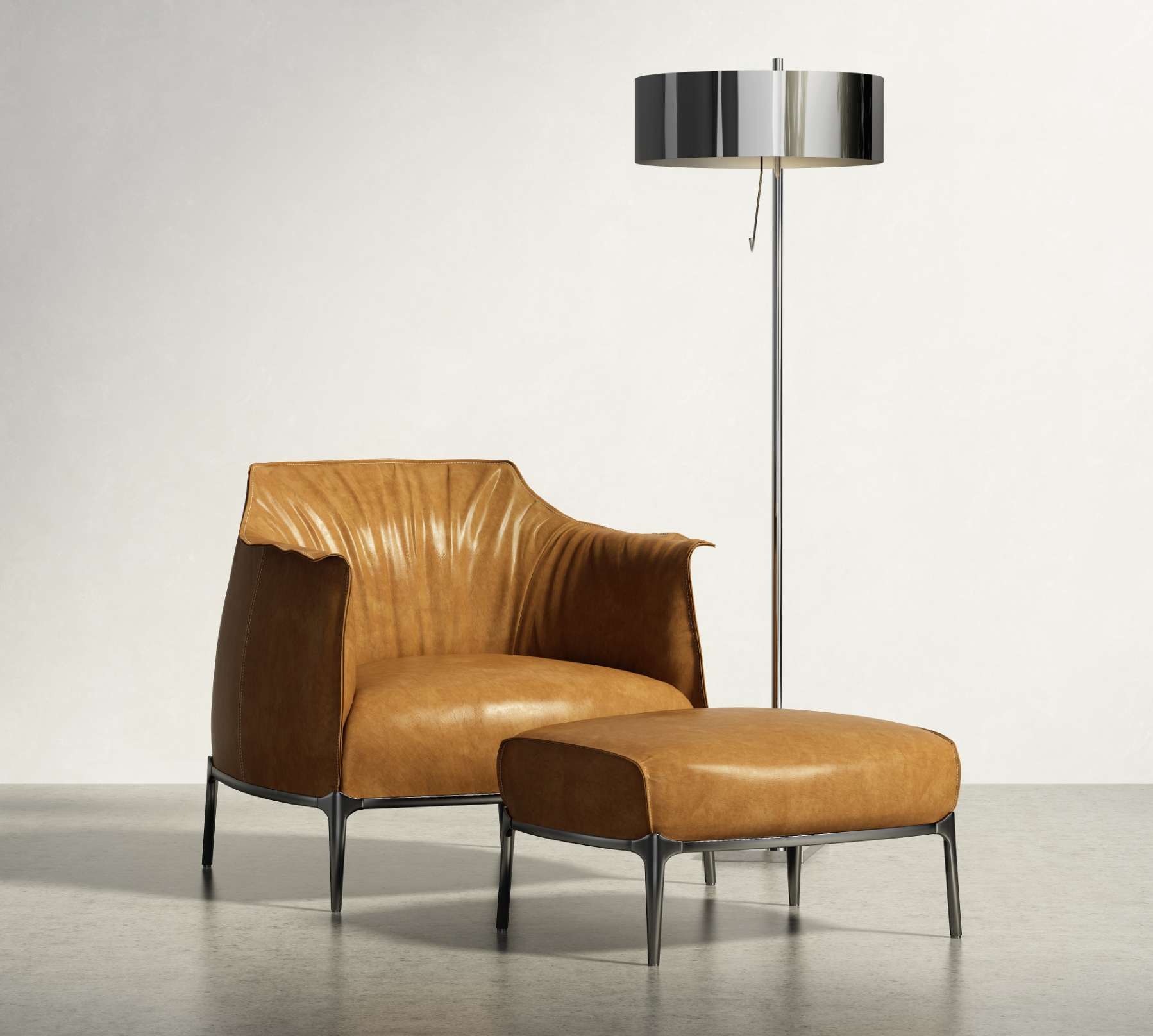h4>INTRODUCTION:
In the modern civilization, houses without television, computer, radio or refrigerator are the exceptions. It is nonetheless true that the average consumer has at best; a very sketchy idea of what he is paying for each time his electricity bill falls due.
For a civil engineer, in building construction it is very important to have fundamental knowledge of electrical work involved.
ROLE OF ELECTRICAL CONSULTANT
Electricity plays a vital role in all the services provided to a house but it is also very dangerous if not handled properly. Therefore all the electrical works should be carried out under the guidance of competent electrical consultant.
Following are the duties and responsibilities of an electrical consultant.
- To study the building layout, for electrical design prepared by
- To prepare the layouts and preliminary estimates of the electrical work in co-ordination with architects and
- To obtain a temporary electrical
- To visit the site for confirming the available resources of electricity .
- To calculate the electrical load required for the project and get it
- To prepare the following
Development layouts :-
- Location of substation and transformer
- Location of feeder pillar
- Location of meter room
- Underground ducting layouts
- Layouts of temporary service lines
- Location of G. sets
- Layouts of electricity supply and distribution for clubhouse & different
Internal layout :-
- Layout of cables for mains, V. & telephone.
- Layout of electrical
- Layout of slab
- Layout of drooping on
- Layout of switchboard & light
-
- To Finalize the specification & detailed
- To make necessary planning for the actual work at the
- To test & confirm the material received at site as per specification & norms
- Supervision & periodic inspection of work as & when
OBTAINING ELECTRICAL CONNECTION (CONSTRUCTION METER)
Depending upon the nature of use of the electricity, the electricity companies levy different tariffs. The temporary connections given for a project during construction are charged at higher tariff rates.
The temporary electricity connection (construction meter) is obtained from the authority. The necessary documents and procedure is described later on.
Before commencing a project, availability of electricity at the site is a basic requirement. Therefore considering the minimum load of construction machineries supply of electricity shall be made available from proper authority
LAISONING WITH ELECTRICITY BOARD:
For every new electrical connection, electricity board has laid down certain norms and procedures. Depending upon the nature of use, various categories have been made by the electricity board. Initially, starting with new construction on vacant plot, following procedure is adopted.
OBTAINING CONSTRUCTION METER (TEMPORARY)
- Documents required are :-
- 3 sets of sanctioned building
- Load
- Extract of the Property card of the
- 7/12 extract of the
- Demand letter from the
- A1 form & undertaking on stamp paper by the
- Submission of 3 sets of all above drawings and documents to electricity board’s division
- Arrange for site visit of A.E and J.E from subdivision
- Preparation of lease deed for land, needed for substation with electricity
- After getting approval from the division office, subdivision will issue the construction
- Finalize the location for fixing the construction meter and get the connection from subdivision office.
LOAD SANCTIONING PROCESS:
Subdivision office gives details of available load and rough estimate of transformer capacity. Division office will make necessary changes as per the rules of electricity board and prevailing site situations.
The division office further informs the zonal office about the demand of the load. Zonal office estimates the total expenditure for the desired load. The developer has to pay 15 % amount of the estimate as the supervision charge to the electricity board. The C.E then issues the sanction letter for the total load. After paying 15% supervision charges to electricity board; Developer will approach construction division of the electricity board with sanction letter & receipt of supervision charges.
Then construction division officers visit the site and order licensed contractor to start the work as per the estimates and specification of load sanctioned letter. Builder/ contractor will procure the transformer, H.T. cables, L.T. cables, main feeder pillars, sub feeder pillars, lugs, hardware etc.
All civil work construction of transformer room trenches inside the room, location of transformer, earthing pits, O.S.F, feeder pillars etc will be completed as per the contract and electricity board’s instruction.
Project engineer should check all electrical equipment and material as per specifications.
After completion of all electrical and civil work, the transformer is ready for charging. Construction division will issue a call letter to electrical inspector (P.W.D.). He will inspect the site for the following compliances
- Necessary permission for any structure, higher than 15 meter in
- Provision made for warning alarms against fire
- Provision for lightning arrestor system wherever
- Checking the electrical installations for proper connections and
The electrical inspector issues the permission letter for charging the transformer / generator to construction division of electricity board, after confirming all above norms.
The executive engineer of the construction division issues the instruction to charge the transformer. Then the transformer is charged.
For getting the individual unit connections, the subdivision office prepares the quotations of the cost. After paying this quotation cost, the individual connections are sanctioned. Individual meters shall be fixed with proper earthing.
A) COVERED TRANSFORMER ROOM:
Transformer room is a place provided to accommodate transformer, O.S.F. and main feeder pillar to ensure its security and safety. Size of transformer room: –
- For single transformer – 6m x 8m
- For two transformer – 6m x 11m
The room should have clear and proper access, and proper ventilation. All trenches are provided with non-flammable covers. It should be well equipped with fire fighting equipment.
Transformer: – Transformer is a device which steps up/ steps down the voltages from the incoming source in a safe manner. There are two types of transformers dry & oil filled type. When transformer is provided in basement, Dry type transformer is mandatory.
Transformers are available in following ratings:
| Sr No. | Capacity in KVA | Length in mm | Width in mm | Height in mm | Weight in Kg |
| 1. | 500 | 2050 | 2250 | 2350 | 2300 |
| 2. | 630 | 2500 | 2350 | 2450 | 2750 |
| 3. | 750 | 2500 | 2450 | 2450 | 3000 |
| 4. | 1000 | 2550 | 2700 | 2550 | 3500 |
| 5. | 1250 | 3000 | 2700 | 2650 | 4150 |
| 6. | 1600 | 3050 | 2750 | 2650 | 4800 |
| 7. | 2000 | 3200 | 3250 | 3050 | 5800 |
O.S.F. (oil switch fuse): – The function of O.S.F. or S.F.U. is to provide a cut off and protection for transformer. They are available in following ranges: –
- 11 KVA
- 22 KVA
Main Feeder Pillar With ACB: – M.F.P distributes the electrical load through the terminals. It has one incoming terminal and remaining are outgoing terminals, through H.R.C. fuse. Air circuit breaker cuts-off the supply, in case of failure of the other circuit breaker.
R.M.U. (Ring Main Unit): – R.M.U. works as a change over switch for two high-tension supply lines of which one is taken as a standby.
Meter Room: – Meter room is a place, which accommodates the electrical meters, with the necessary distributions made through bus bar. Meter room should be easily accessible and safe. It should have proper ventilation and lighting. It should be always locked to avoid mishaps. It should be planned for easy movement of atleast one person.
Earthing: – Earthing is a circuit, which provides the connection between leaking electrical current and mass of earth. It is a safety measure to avoid mishaps due to leakage of current. The types of earthing depend on the resistance of the soil and required safety level of the device to be earthed.
Minimum earthing points: –
| Sr no. | Description | Minimum earth points |
| 1 | Transformer | 8 Nos. |
| 2 | Meter room | 3 Nos. |
| 3 | Lift | 2 Nos. |
| 4 | Generator | 4 Nos. |
Bus Bar: – The Busbar is a distribution box with copper strips and H.R.C. fuse (High Rupture capacity fuse). From the feeder pillar, main supply is provided to bus bar. Required tapings are provided to electrical meters. Proper earthing is necessary for bus bar. Different capacities of busbar are 100 A, 200A & 400A.
Under ground Cable Network (Ducting): – After finalizing the locations of the substation, L.T. feeder pillar, meter rooms, generators, pump house, street lighting, the underground cabling network plan is to be finalized.
Following points should be considered while finalizing the underground cabling network layout.
- Drainage
- Water supply
- Fire fighting layout
- Telephone ducting
- Generator cabling
- Storm water drains
It is necessary to use well-laid and properly jointed RCC Hume pipe of specified diameter for cable ducting network. The RCC pipes should be laid atleast 1.2m below the finished road level. It is necessary to provide chambers of adequate size, to have proper space for cabling through RCC Hume pipes.
Location of chambers is decided as per : –
- The change of
- At Junctions or at every 15 meter or as required in this straight
Internal Wiring:-
To safeguard the wires and to avoid any mishap, they are run through P.V.C. conduits, Types of conduit wiring are: –
- Open conduit
- Concealed conduit
1) Open conduit wiring :-
- Open Conduit wiring: – Generally this type of wiring is preferred for carrying the mains (wires from meter room to distribution box). Pipes and fittings of approved make confirming to IS specifications are to be
- Casing Caping: – Rectangular V.C, channel shaped conduits, which are lockable to each other are widely known as casing caping. Casing caping is used in open conduit type wiring because it provides
- Better appearance
- Ease in maintenance
- More flexibility for alterations and change in internal electrical
Different Sizes of Pipes to be used as Conduits :-
- Mains – 32mm
- Sub main – 25mm diameter
- Earthing – 20mm diameter
- Power point – 20mm/25mm diameter
- Light point – 20mm/25mm diameter
- V. and Phone – 20mm diameter
Concealed conduit wiring: – This type of wiring is preferred over open type conduiting because,
- It is safe
- It is durable.
- It gives better appearance to the ceilings & walls.
Work Procedure: – Conduiting in Slabs: –
- Study the electrical layout for position of points and distribution
- Mark the position of distribution box, switchboards and height of points from F.L.
- Lay the conduit for mains, sub mains, V points, phone points and fan boxes etc.
- Finalize the location of fan box, considering the position and size of loft, elevational projections if
- Lay the conduit after the reinforcement work is completed. Conduit should be firmly binded with the reinforcement.
- All pipes and accessories should be fixed using
- Check the position & thickness of the wall while laying the wall
- Joint at junction box and fan box should be sealed properly to prevent the entry of cement slurry in
- Seal the hollow part of the fan box with
- While casting of slab, electrician should be present on the slab, to check that the pipes are not damaged during casting of
- Avoid sharp turnings and overlapping of conduits
- Avoid running of a bunch of pipes to prevent weakening of concrete in that
- After deshuttering of beams and slabs; clean all the pipes, and pass the I. wire through it to confirm the routing of pipes is not damaged during concrete.
Conduiting In Walls: –
- The dropping at slab, beam and distribution boards should be
- After completion of brickwork and its curing, the layout of conduits and positions of switch board with reference to FFL should be
- Chiseling of grooves should be done by cutter machine
- Fix the pipe firmly and ensure that pipes are be inside the surface of
- All concealed boxes shall be fixed with their face in line with the plaster level
- Chicken mesh shall be fixed on wall conduits and grooves shall be finished in cement mortar with scratch
- Curing should be done
Wiring And Fixtures Fitting: –
- Wiring work should commence after doors and windows are fixed with proper locking
- Study the drawings and specifications of material to be
- Complete the wiring as per colour code and size of the wires for various
- Extra length of wires for looping should be considered while terminating the wires in
- Ensure that, all the switch plates, angle holders, ceiling roses etc are in line and
- All the wires connected to switches, fixtures & fittings are to be done
- The testing of wiring should be carried by using meger
Protection of Electrical Work: –
- Protection against earth leakage: – To interrupt the current due to short circuit MCB/ELCB shall be
- Protection against over load: – MCB/designed rating fuses shall be provided to avoid
- Protection against short circuit: – MCB/fuses/circuit breakers shall be provided to have protection against short
Standard Height Of Electrical Fittings from the F.F.L.: –
| Sr No. | Fittings | Height From FFL |
| 1 | Bell push | 1.5 m |
| 2 | Switch board | 1.5 m |
| 3 | Light point on wall | 2.4 m |
| 4 | T.V./Phone/5A point | 0.75 m |
| 5 | Exhaust fan point | 2.1 m |
| 6 | Boiler point | 2.4 m |
| 7 | Main D.B. | 2.4 m |
| 8 | Fridge point | 1.5 m |
| 9 | Window A/C point | 1.5 m |
| 10 | Washing machine point | 1.5 m |
Minimum Electrical Points required : –
| Sr No | Rooms | Approx Area | Light Point | Fan Point | Power Point | Plug on main board | Plug Point | Exhaust Point | T.V.
Point |
Phone Point |
| 1 | Living room | Upto 150 sft | 2 | 1 | 1 | 2 | 1 | 1 | 1 | |
| 2 | Dinning | Upto 80 sft | 1 | 1 | 1 | |||||
| 3 | Kitchen | Upto 80 sft | 2 | 1 | 2 | 1 | 1 | 1 | ||
| 4 | Master bed | Upto 140 sft | 2 | 1 | 1 | 1 | 1 | 1 | 1 | |
| 5 | Common bed | Upto 130 sft | 2 | 1 | 1 | 1 | ||||
| 6 | Balcony/Terrace | Upto 100 sft | 1 | |||||||
| 7 | Toilet | Upto 40 sft | 1 | 1 | 1 | 1 | ||||
| 8 | Passage | _ | _ | 1 | 1
(for washing m/c) |
Power Requirement for Some of The Important Household Appliances: –
Sizes of Wires For Various Purposes :-
| Supply (From – To) | Type of Supply | Size of wire used | colour of wire |
| Mains- (Meter room to D.B.) | Phase I | 4 mm2 (7/20) | Red |
| Phase II | 4 mm2 (7/20) | Yellow | |
| Phase III | 4 mm2 (7/20) | Blue | |
| Neutral | 4 mm2 (7/20) | Black | |
| Sub main (D.B. to Switch board) | Earth | 1 mm2 (1/18) | Green |
| Phase | 2.5 mm2 (3/20) | Red | |
| Neutral | 2.5 mm2 (3/20) | Black | |
| Points (Switch Board to Terminal) | Earth | 1 mm2 (1/18) | Green |
| Phase | 1 mm2 (1/18) | Red | |
| Neutral | 1 mm2 (1/18) | Black |
LOAD CALCULATIONS: – (Example)
Total Buildings – 3 nos. of P+7 storied All 2BHK flats with 28-flats/ building. Standard Points per flat :-
| Sr No | Rooms | Bell Point | Light Point | Fan Point | Power Point | Board Plug | Plug Point | Exhaust Point | T.V.
Point |
Phone Point |
| 1 | Living room | 1 | 2 | 1 | 1 | 2 | 1 | 1 | 1 | |
| 2 | Dining | 1 | 1 | 1 | ||||||
| 3 | Kitchen | 2 | 1 | 1 | 1 | 2 | 1 | |||
| 4 | Master bed | 2 | 1 | 1 | 1 | 1 | 1 | 1 | ||
| 5 | Common bed | 2 | 1 | 1 | 1 | |||||
| 6 | Balcony/Terrace | 1 | ||||||||
| 7 | Toilet | 2 | 2 | 2 | 2 | |||||
| 8 | Passage | 1 | 1 | |||||||
| Total | 1 | 13 | 5 | 4 | 5 | 9 | 3 | 2 | 2 |
Common lighting: –
Building landing: – 8 light points
Terrace: – 2 light points
M/C room: – 1 light point
Entrance foyer: – 3 light point
Parking: – 8 light points
Streetlight: – 14 light point
Lift: – 7.5 HP
Bulkhead: – 8 nos.
Lift cabinet: – 1 light point
Calculation of total loads
| a) | Load per flat | |
| 1) Light point – 13nos x 40W | = 520W | |
| 2) Fan point – 8nos x 50W | = 400W | |
| 3) Power point: – | ||
| b) | A.C. point – 1 x 1500W | = 1500W |
| c) | Geyser point – 2 x 2000W | = 4000W |
| d) | Fridge point – 1 x 200W | = 200W |
| 4) | 5A point – 14nos x 200W
TOTAL LOAD |
= 2800W
= 9420watts |
= 9.42 KW per Flat.
Apply diversity factor of 0.6 = 0.6 x 9.42KW
= 5.652KW per Flat.
Common Lighting Load: –
- Staircase, passage and parking: – 22nos x 40watt = 880watt
- External lighting: – 14nos x 40watt = 560watt
- Lift and machine room: – 10nos x 40watt = 400watt
- Lift electrical motor: – 7.5HP = 7.5 x 746 = 5.595KW
TOTAL = 7.435KW
Total Building load = (No. of flats x load/flat + common lighting load)
= (28 x 5.652 + 7.435) KW
= 165.69KW.
Total Load of 3 building = 3 x 165.69KW = 497.07KW
Applying overall diversity factor as 0.70 load will be; Load = 497.07 x 0.7
= 347.94KW Say 348KW.
. : Transformer capacity = 348KW
0.8
= 435 KVA = 435
0.9 (efficiency)
= 483.33 KVA Say 483KVA
. : Transformer capacity = 500 KVA
Norms For Constructing a Building In The Vicinity Of High-Tension Lines: –
- No building should be allowed to be erected or re-erected or any additions or alterations made to the existing building unless the following minimum clearance is provided from the overhead electric supply line. For every additional 33 KV voltage line add 0.3 meter clearance extra in the minimum clearance indicated.
| Sr.
No. |
Description | Minimum clear vertical distance in meters | Minimum clear distance in meters |
| 1 | Low and medium
voltage lines |
2.50 m | 1.20 m |
| 2 | High voltage lines
1) Up to 11KV. 2) Above 11KV & up to 33KV. |
3.70 m
1.20 m |
3.70 m
2.00 m |
Recommended Symbols For Electrical Installation: –
| Sr. No. | Description | Symbol |
| 1. | WIRING | |
| Ø | General wiring | |
| Ø | Wiring on the surface | |
| Ø | Wiring under the surface | |
| Ø | Wiring in surface conduit | |
| Ø | Wiring in concealed conduit | |
| Ø | Wiring going upwards | |
| Ø | Wiring going downwards | |
| Ø | Wiring passing vertically through room | |
| 2. | FUSE-BOARDS | |
| Ø | Lighting fuse-board without switches | |
| Ø | Lightning fuse-boards with switches | |
| Ø | Distribution fuse-board without switches | |
| Ø | Distribution fuse-board with switches | |
| Ø | Power fuse-board without switches | |
| Ø | Power fuse-board with switches | |
| 3. | EARTHING | |
| Ø | Earth point | |
| 4. | SWITCHES AND SWITCH-OUTLET | |
| Ø | One-way single pole switch | |
| Ø | One-way two pole switch | |
| Ø | Two-way switch | |
| Ø | Pendant switch | |
| Ø | Push button | |
| 5. | SOCKET-OUTLET | |
| Ø | Socket-outlet, 5A | |
| Ø | Socket-outlet, 15 A | |
| Ø | Combined switch and socket outlet, 5A | |
| Ø | Combined switch and socket outlet, 15A | |
| 6. | FANS | |
| Ø | Ceiling fan | |
| Ø | Bracket fan | |
| Ø | Exhaust fan | |
| Ø | Fan regulator |
| 7. | ELECTRICAL APPLIANCES | |
| Ø | General | |
| Ø | Heater | |
| 8. | LAMPS AND LIGHTINING APPRATUS | |
| Ø | Lamp or outlet for lamp | |
| Ø | Lamp mounted on wall | |
| Ø | Lamp mounted on ceiling | |
| Ø | Fixture with built in switch | |
| Ø | Emergency lamp | |
| Ø | Bulk head lamp | |
| Ø | Water tight lighting fitting | |
| Ø | Fluorescent lamp | |
| 9. | BELL, BUZZERS AND SIRENS | |
| Ø | Bell | |
| Ø | Buzzer | |
| Ø | Siren | |
| Ø | Horn or hooter | |
| 10. | TELECOMMUNICATION APPARATUS | |
| Ø | Socket for telecommunication apparatus | |
| Ø | Arial | |
| Ø | Loudspeaker | |
| Ø | Radio receiving set | |
| Ø | Amplifying equipment | |
| Ø | Television receiver | |
| Ø | Control board for public address | |
| 11. | FIRE ALARMS | |
| Ø | Manually operated fire alarm | |
| Ø | Automatic fire detector switch | |
| Ø | Fire alarm indicator | |







0 Comments